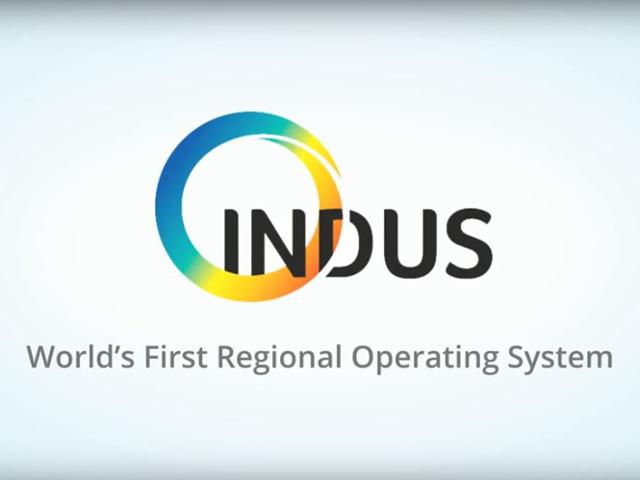 It might seem like an old-fashioned way of doing business. But three friends from IIT-Bombay — Rakesh Deshmukh, Sudhir Bangarambandi and Akash Dongre — swear by the virtues of five Ws and one H: Who, What, When, Where, Why, and How. “Keep asking questions and you will get answers, solutions and, yes, business,” grins Deshmukh, a serial entrepreneur and co-founder of Indus OS, which has emerged as the second largest smartphone operating system in India with over 6 million users and a 7.6% market share.
It might seem like an old-fashioned way of doing business. But three friends from IIT-Bombay — Rakesh Deshmukh, Sudhir Bangarambandi and Akash Dongre — swear by the virtues of five Ws and one H: Who, What, When, Where, Why, and How. “Keep asking questions and you will get answers, solutions and, yes, business,” grins Deshmukh, a serial entrepreneur and co-founder of Indus OS, which has emerged as the second largest smartphone operating system in India with over 6 million users and a 7.6% market share.
While Google’s Android dominates with an 82.3% share, Chinese smartphone major Xiaomi comes third with its MIUI operating system cornering 5.1% and Apple’s iOS a distant fourth with 2%, according to a recent India smartphone report for the third quarter of 2016 by Counterpoint Research.
What helped Indus — a little-known software company in Mumbai that customised Android to build a mobile operating system — in pipping Microsoft’s Windows and Apple’s iOS in India is finding answers to basic questions. Take, for instance, this one: Who all speak English in India? The answer — roughly 10% of the population — made the trio sit up. “It means 90% speak Hindi and regional languages,” says Deshmukh.
The second question provided more fodder for their business plans. How do you get people to use their smartphones more often? The unanimous answer: make the handset accessible in local language or mother tongue.
“The next 300 million smartphone users from emerging markets will be native language speakers,” says Deshmukh.
The answers to the remaining four questions came from a user survey they conducted in October 2013 across 25 tier-I, tier-II and tier-III Indian cities. The findings were startling: over 79% of those surveyed were not satisfied with their smartphone experience; close to 52% used their smartphone for just basic applications like calls and messages; a staggering 72% preferred regional language content on their smartphones; and 37.5% were using a smartphone without having an email address.
Mother tongue preference
The concluding message of the survey was explicit: for first-time smartphone users, who are either migrating from a feature phone or no phone, the transition is overwhelming. The need of the hour, felt the Indus co-founders, was not only to simplify the smartphone experience but to have the entire ecosystem in the user’s native language.
Deshmukh, Bangarambandi and Dongre cofounded Indus OS in May 2015. That was the time to answer another critical question: How to score some business? The immediate answer was to tie up with all desi handset makers. Over the past year and a half, Indus has struck alliances with Micromax, Celkon, Swipe, Karbonn and Intex, with the OS loaded in some 50 smartphone models, and available in 12 Indian languages, including Hindi, Marathi, Bengali and Urdu.
Over three-fourths of the models of Micromax — the second largest smartphone maker in India — have Indus, claims Deshmukh. The easiest way to make people realise the true potential of a smartphone is to have it in their preferred regional language, he adds.
Deshmukh’s contention is supported by recent research by the Mobile Marketing Association (MMA) jointly with Kantar IMRB on smartphone and feature phone usage and behaviour. The study showed that 85% of feature phone users do not prefer switching to smartphones. Reasons: functional benefits, durability, battery life and ease of repair. Add language to the list, and it becomes clear why a multilingual operating system is needed in a country like India, says Deshmukh.
What Indus has done, he claims, is not just cosmetic changes by having regional languages but substantial customisation. Take, for instance, its App Bazaar. An equivalent of Google Play, App Bazaar claims to be the world’s only regional app marketplace, provides over 50,000 applications to users in English and 12 regional languages, and has had over 15 million app downloads so far.
What makes life simple for users is that they don’t need to have either an email ID or a credit/ debit card to download apps, as the amount gets deducted from their mobile carrier balance or added to their bills.
An intuitive and simple user interface, transliteration of text from English to any regional language and matra prediction feature in the keyboard are some unique features of the operating system (see “App Bazaar…”).
Experts says that Indus stands to gain most from the smartphone revolution in India. User interface is good, barrier to use technology is low, customisation in vernacular language is high, and all these have given it huge traction, says Tarun Pathak, senior analyst at Counterpoint Research. “Though a customised Android, Indus has redefined the Android with a more vernacular experience,” says Pathak.
But does Indus need to be wary of its parent, Google? Pathak doesn’t see any immediate threat. For a company like Google, he says, to allocate resources to all Indian languages might be too much to expect.
“But the threat (over the long term) is always there.” Deshmukh, for his part, dismisses the threat. “We don’t see either Android or Google as a competitor,” he says, adding that Indus has made a 60% change in the Android source code to deeply integrate its technology. But the foundation remains the same: one can still use Google Maps, or Google Search, or Google apps.
“We have not replaced any product that Android offers,” he says. When a new Android version is launched, he explains, the same version is released in Silicon Valley as well as in Satara in India. Digital awareness, language sensibility and availability of local content and services are overlooked by Android’s universal approach to developing a product, he says.
Deshmukh says that while Android has a topdown approach to developing its features, Indus’s is bottom-up. While Google is a company of global nature and is applicable to multiple contexts, Indus is betting big on vernacular medium.
Conceding that there was a gap in providing multilingual operating system, analysts says that the road is not going to be smooth for Indus as Google has already gauged the grey areas and is supporting 11 Indian languages. In fact, Google has already pressed the regional language mode button.
Allo goes Hindi
Last month, Google introduced Hindi language capabilities in its Google Allo smart messaging app. Launched in September last year, Allo uses Google Assistant and makes it easier for users to respond with features such as Smart Reply — it recognises the language a user is chatting in and begins to show suggested responses in that language.
One has to just say ‘Talk to me in Hindi’ or adjust the language setting on one’s device to start using Google Assistant in Hindi. Apart from answers, Allo provides latest news, weather, traffic, sports and even information on ATMs, grocery stores and directions.
It’s not only Google that has spotted gold in regional languages. Amazon exhibited its intent in December 2016 when it launched digital books in five Indian languages in Kindle. In September 2015, Apple added support for Hindi and Hinglish to its mobile platform iOS, as well as for several dialects, including Awadhi, Maithili and Santali.
Clearly, it’s not going to be a cakewalk for Indus. “Indus OS now needs to move up the ladder and try coming out with the second level of value addition,” says Krishna Mukherjee, telecom analyst with Cybermedia Research. Indus, she adds, should also look at more tie-ups with device manufacturers, and impart mobile education to the nooks and corners of the country.
Deshmukh is aware of the challenges. Indus has invested more than three years in researching and understanding the Indian context, and is an operating system that is “Made for India” by Indians, he avers. “This turns into the standout differentiation in the entire scenario.” With a large section of the population looking for smartphones to be accessible in their native languages, Indus OS is presenting a solution not provided by anyone else in the market, he adds.
Google, as a brand, contends Deshmukh, is spread across geographies. When it comes to Android, it is a largely globalised product, and it is less pragmatic for them to have a niche offering. “The diversity of India — with 22 official languages — calls for a focused and a localised operational strategy.”
From 6 million users now to an estimated 100 million users by 2020, Indus is optimising itself for an audacious play. While Indus has a 7.6% market share, Deshmukh points out that the combined share of its Indian handset partners is 35%. “We want to capture all this. And it’s doable,” he says. “Why should people buy phones if they can’t use it in their language?”




